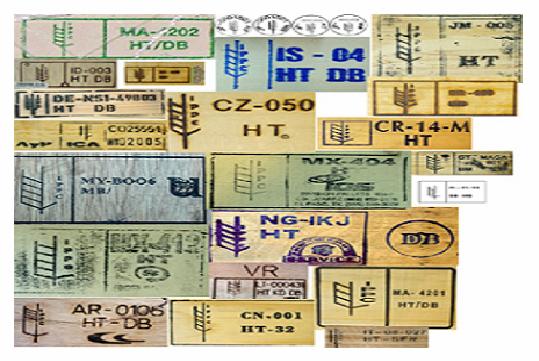Wood Packing Material – WPM Regulations
There have been recent regulations that have come into effect that regulate the type of material that can be used for the manufacture of pallets, wood crates and wood reels. Any equipment that is loaded aboard a WHOI vessel on an international voyage must have the associated packing material comply with these regulations. The below information came from the U.S. Customs and Border Protection Website and can be found at: CBP Wood Packing Material (WPM)
We have provided details below to help our users understand how this affects their equipment loading aboard WHOI Vessels.
In a final rule published in the Federal Register on September 16, 2004, the U.S. Department of Agriculture (USDA) amended its regulations with the goal of decreasing the risk of introducing plant pests into the United States. USDA has adopted the international standard for wood packaging material (WPM) that was approved by the International Plant Protection Convention (IPPC) on March 15, 2002.
The IPPC standard calls for most WPM to be either heat treated or fumigated with methyl bromide in accordance with the Guidelines and marked with an approved international mark certifying that treatment. The final rule, which becomes effective on September 16, 2005, will affect all persons using wood packaging material in connection with importing goods into the United States.
Q: What kinds of WPM are covered by this regulation?
A: Most wood packaging materials are covered by the new rule including wooden packaging materials such as pallets, crates, boxes, and pieces of wood used to support or brace cargo. These materials are currently referred to as solid wood packing material (SWPM), which is defined as ‘‘[w]ood packing materials other than loose wood packing materials, used or for use with cargo to prevent damage, including, but not limited to, dunnage, crating, pallets, packing blocks, drums, cases, and skids.”
Q: What are the actual treatment and marking requirements?
A: There are two treatment options, heat treatment or fumigation with methyl bromide.For heat treatment, WPM must be heat treated to achieve a minimum wood core temperature of 56°C for a minimum of 30 minutes. For fumigation, the WPM must be fumigated with methyl bromide in an enclosed area for at least 16 hours at the regulated dosage and then must be aerated to reduce the concentration of fumigant below hazardous exposure levels.
After either of these treatments, the WPM must be marked in a visible location on each article, preferably on at least two opposite sides of the article, with a legible and permanent mark, approved by the IPPC, to certify that wood packaging material has been subjected to an approved treatment.
Q: What does the approved mark look like?
A: Marks will vary by country and treatment establishment. To the right are some examples. As you can see, the marks may vary in size, shape, and color. What the mark must include is the IPPC trademarked graphic symbol, the ISO two-letter country code for the country that produced the wood packaging material, a unique number assigned by the national plant protection agency of that country to the producer of the wood packaging material, and an abbreviation disclosing the type of treatment. In addition to these four required components, marks may also include other information.
APHIS has stated that they recognize the Guatemalan “TT” and “BM” markings as being valid indicators of treatment type. Based on this, shipments with such markings from Guatemala will be considered compliant.
Q: Are there any exemption in this regulation?
A: There are certain exemptions written into the regulation, yes. They are:
Manufactured wood materials such as fiber board, plywood, whisky and wine barrels, polywood, strandboard, and veneer,
Pieces of wood that are less than 6 mm (0.24 in) in any dimension,
Sawdust, wood wool, and wood shavings, produced as a result of sawing or shaving wood into small, slender, and curved pieces less than 6 mm in any dimension, and
WPM used by the U.S. Department of Defense (DOD) to package non-regulated articles, including commercial shipments pursuant to a DOD contract.
Firewood, mesquite wood for cooking, and small, noncommercial packages of unmanufactured wood for personal cooking or personal medicinal purposes will continue to be allowed to enter directly from Mexican border states.
There is no requirement for treatment or marking of WPM in domestic circulation.

